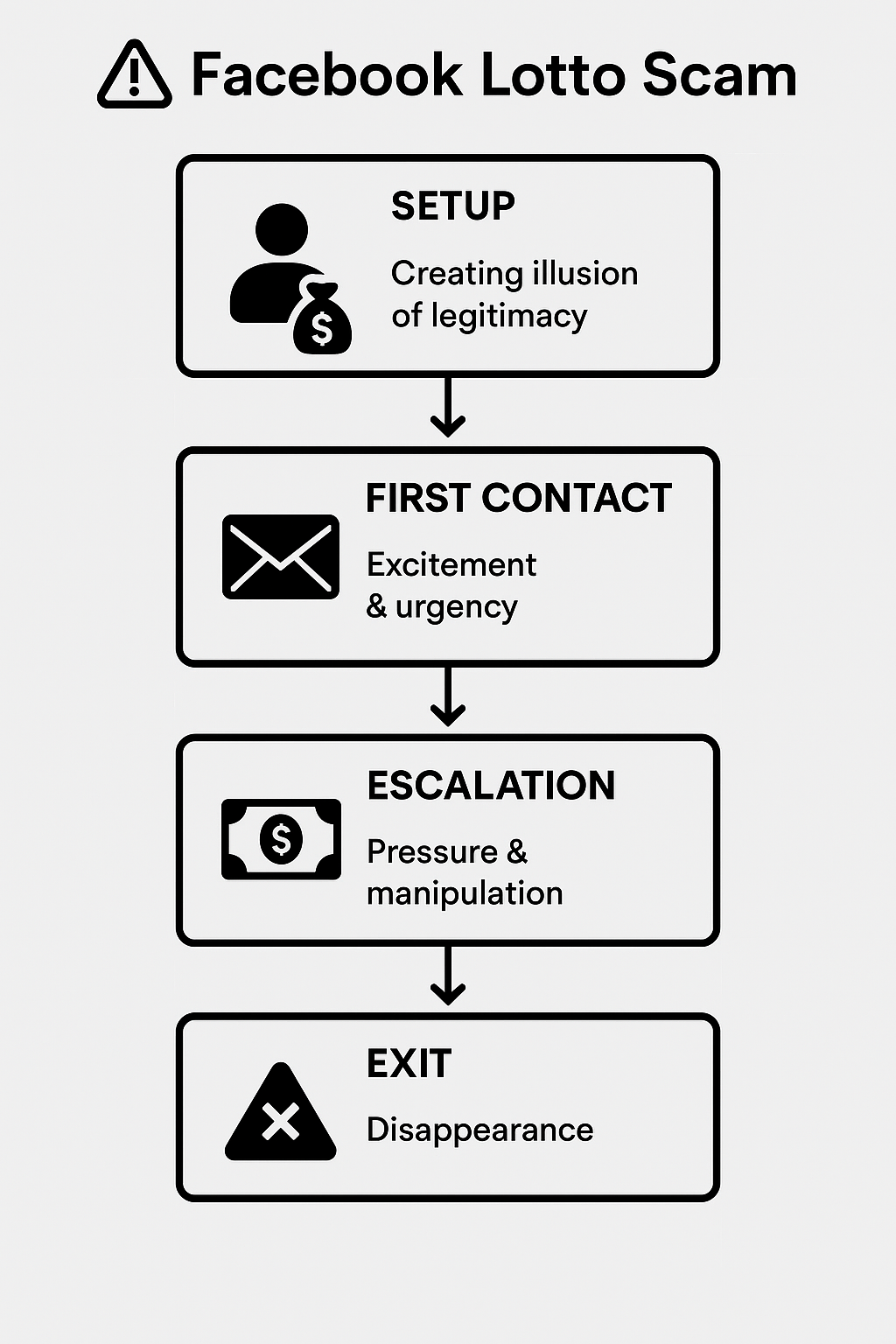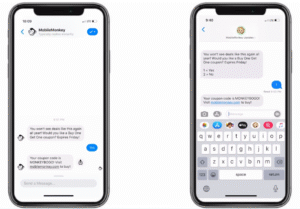Do you know about the trending Facebook lotto format for yahoo? This update is so real that even yahoo boys can become victims and that’s why we have decided to share some insights for your preservation.

The Facebook lotto format is a type of yahoo scam where fraudsters pretend to be running a lottery or promo on Facebook. The scammer usually claim the victim has “won” some money or a prize, then trick them into sending “processing fees,” “tax,” or “delivery charges.”It’s not a real lottery,it’s just one of the popular yahoo formats used to defraud people.
That’s just the summary of how this format works. Stay connected till the end as we go in detail.
If this is your first time here, we share insights on different hustle updates. You might find our articles interesting if you’re a hustler.
What are the Tools Scammers Commonly Use in Facebook Lotto Scams?
Fake Social Media Accounts:
Scammers create Facebook profiles, pages, or groups pretending to be companies, agencies, or celebrities.
Stolen Photos & Documents:
They use images of “happy winners,” ID cards, cheques, or certificates (often downloaded from Google or stolen from real people) to look legitimate.
Editing Software:
Simple design tools (like Photoshop or mobile editing apps) are used to forge receipts, lottery certificates, and official-looking letters.
Messaging Platforms:
Facebook Messenger, WhatsApp, or Telegram are their main channels to send “congratulations” messages and pressure victims.
Fake Testimonials:
They run multiple accounts to comment, like, and post as if they are “real winners,” building false social proof.
Bank Accounts / Mobile Money Numbers:
These are used to collect payments disguised as “processing fees” or “delivery charges.”
Psychological Manipulation (their most powerful tool)
Beyond technology, scammers rely on human emotions excitement, hope, greed, and fear of missing out to keep victims engaged.
Facebook Lotto Format Explained: How the Process Happens
This process includes different steps and procedures and we shall be discussing all for easy understanding.
The setup or impersonation
This is where the scam begins, and it’s all about creating an illusion of legitimacy. No victim will pay without trust right? Scammers understand that even better so they tend to build trust first.
They start by creating fake Facebook profiles, pages, or groups that appear official and very real. They often impersonate well-known organizations like banks, telecom companies, government agencies, or big brands like Coca-Cola, Gucci etc.
To make these profiles convincing, they use stolen photos or stock images of smiling People, Men on suit and sometimes even celebrities.
and design fake documents such as cheques, certificates, or receipts that look authentic. They post images of “past winners” and create fake activity in their groups or pages, with multiple accounts pretending to celebrate their winnings, adding comments and likes to simulate social proof. This activity is carefully orchestrated so that potential victims feel they are seeing a genuine lottery that others have already benefited from.
Here, the hustlers make their choices of target then prepare a personal message that resonates the activities on their said official page.
And that leads us to the next step.
The First Contact stage
Once the setup is complete, the scammer reaches out to the potential victim directly. This first contact is carefully designed to grab attention and make the victim feel special.
Usually, the message starts with congratulations, excitement, and urgency, often using emojis and phrases like
“Congratulations! You’ve been selected as a winner!” or “Good news! Your name has been picked in our Facebook lottery promo.”
The scammer may claim that the prize is a large sum of money, a valuable item, or some other attractive reward, and they make it sound official by referencing a company, bank, or government agency.
At this stage, they try to make the interaction feel personal, sometimes even addressing the victim by name or including small details they collected from the victim’s profile.
The goal is to get the victim to respond and engage, creating a sense of anticipation and excitement. By the end of this initial message, the victim is already drawn into the scam, curious about the prize and eager to see what comes next.
The Escalation stage/Billing Format
Once the victim responds to the initial message, the scammer begins to slowly draw them deeper into the trap. At first, they continue to reinforce the illusion of legitimacy by sending more proofs like fake receipts, screenshots of payments, or images of other winners, all designed to make the prize feel real and attainable.
Then comes the first request for payment, usually framed as a small necessary fee to release the prize. This could be tagged
- Delivery fee
- Processing charge
- or “tax clearance
The amount is intentionally small, enough that the victim thinks it’s worth paying to claim the larger reward.
After the victim pays, the scammer introduces complications that require additional payments. They might claim that customs has held the package, that a duplicate name has been detected, or that an anti-fraud or anti-terrorism certificate is needed.
Each time, they create urgency and pressure the victim to act quickly, often saying the prize could be revoked if the payment isn’t made immediately. They may even send fake confirmations showing that previous payments have been “processed,” keeping the victim convinced that the prize is real and within reach.
Throughout this escalation, the scammer carefully manipulates emotions, building excitement, hope, and fear of losing the prize. They isolate the victim, sometimes insisting that details remain confidential, which discourages the victim from seeking advice. Step by step, they drain money, exploiting the victim’s desire for a quick gain. Eventually, when the victim refuses to pay further, the scammer disappears, blocks the victim, and the promised prize never materializes.
Now that you know how the Facebook lotto format works, let’s quickly answer some questions you may have in mind.
FAQS: 5 Questions and answers about the New Facebook lotto format for client
What should I do if I already paid money to a Facebook lotto scammer?
If you’ve already sent money to someone running a Facebook lotto scam, the first step is to stop all communication with them immediately.
Scammers will keep inventing new excuses to ask for more money if you continue engaging. Next, report the scammer’s profile or page to Facebook so their account can be investigated and possibly shut down.
If you sent the payment through a bank transfer, mobile money, or online wallet, contact your bank or payment provider right away to report the fraud in some cases, they may be able to freeze the transaction if it’s still pending.
You should also file a report with your local police or cybercrime agency, especially if the amount lost was significant.
Finally, take steps to protect your personal information, if you shared sensitive details like your ID or bank account, consider changing passwords and monitoring your accounts for suspicious activity. Even though it can be difficult to recover money once it’s sent, acting quickly increases your chances and helps authorities track these scams.
How can I recognize a fake Facebook lottery message?
You can usually recognize a fake Facebook lottery message by looking for certain red flags. First, be cautious if you receive an unsolicited message telling you that you’ve “won” a prize or lottery you never entered.
Legitimate promotions don’t contact winners out of the blue. Scammers often use overly excited language with emojis and phrases like “Congratulations! You’re a lucky winner!” to get your attention quickly.
Another sign is if the sender asks for money upfront, usually disguised as a “processing fee,” “delivery charge,” or “tax clearance.” Real lotteries never ask winners to pay before receiving their prize.
Pay attention to the profile or page sending the message. Fake accounts are often new, unverified, and may have very few followers or poor-quality posts. The messages themselves may contain grammatical errors, spelling mistakes, or generic greetings such as “Dear Winner” instead of using your actual name. Scammers may also pressure you to respond quickly or keep the matter confidential, which is a common tactic to stop you from thinking carefully or seeking advice.
If a message sounds too good to be true like being told you’ve won huge sums of money without entering any contest then it’s a scam. Always double-check with the official website or verified pages of the company before believing such claims.
Conclusion
In most cases this scam is very easy to recognize because they usually come the same way “Copy and paste”
The Facebook lotto scam thrives on false promises and upfront fee requests. No real lottery will ever ask you to pay before receiving a prize. Stay alert, verify from official sources, and never send money to claim “winnings.” Awareness is the best protection against online fraud.
You can download this page as PDF to act as a Reminder or save to bookmark.

We focus on researching and publishing clear, reliable information about online activities. By explaining how different formats and tricks work, we aim to educate our audience and support safer internet use




